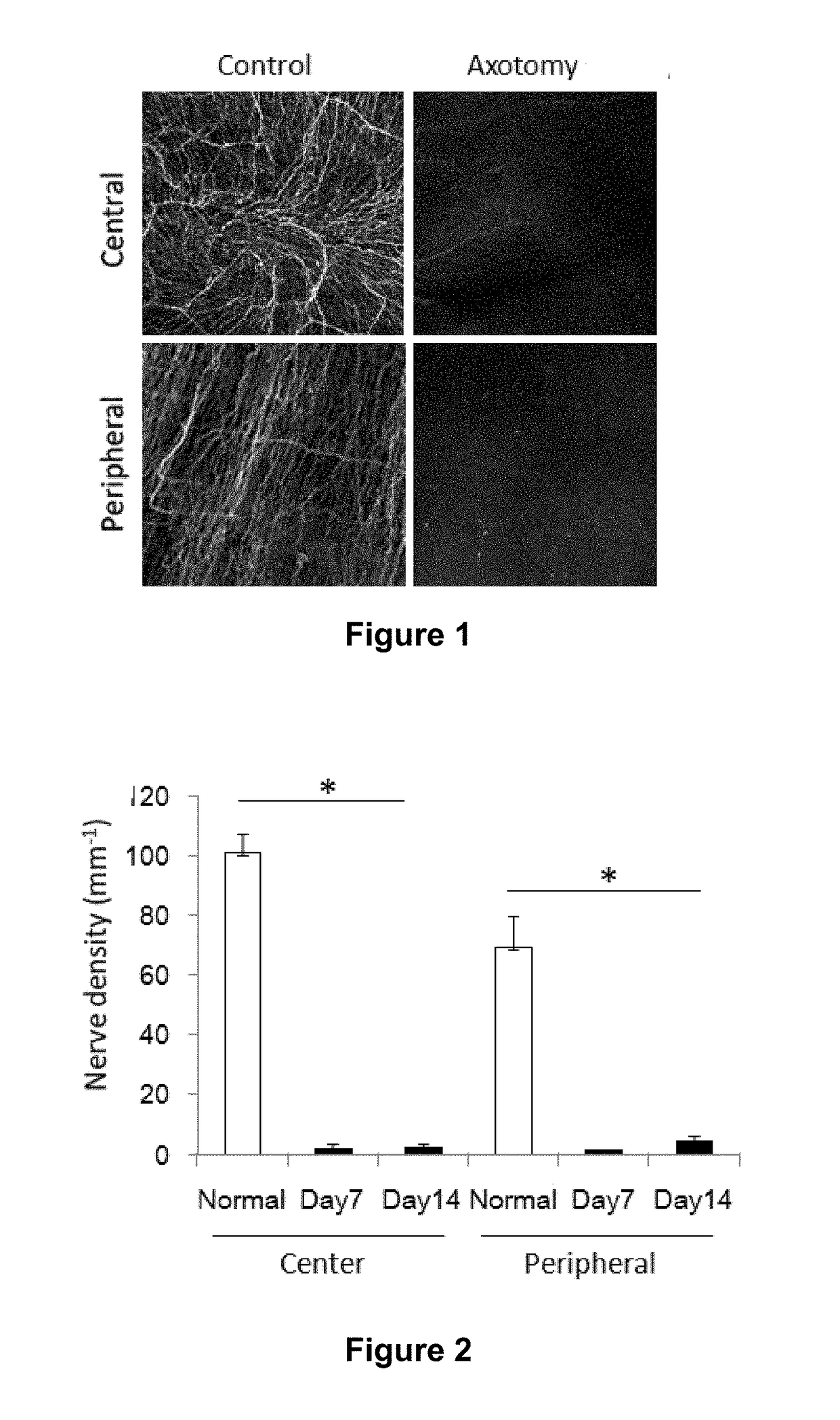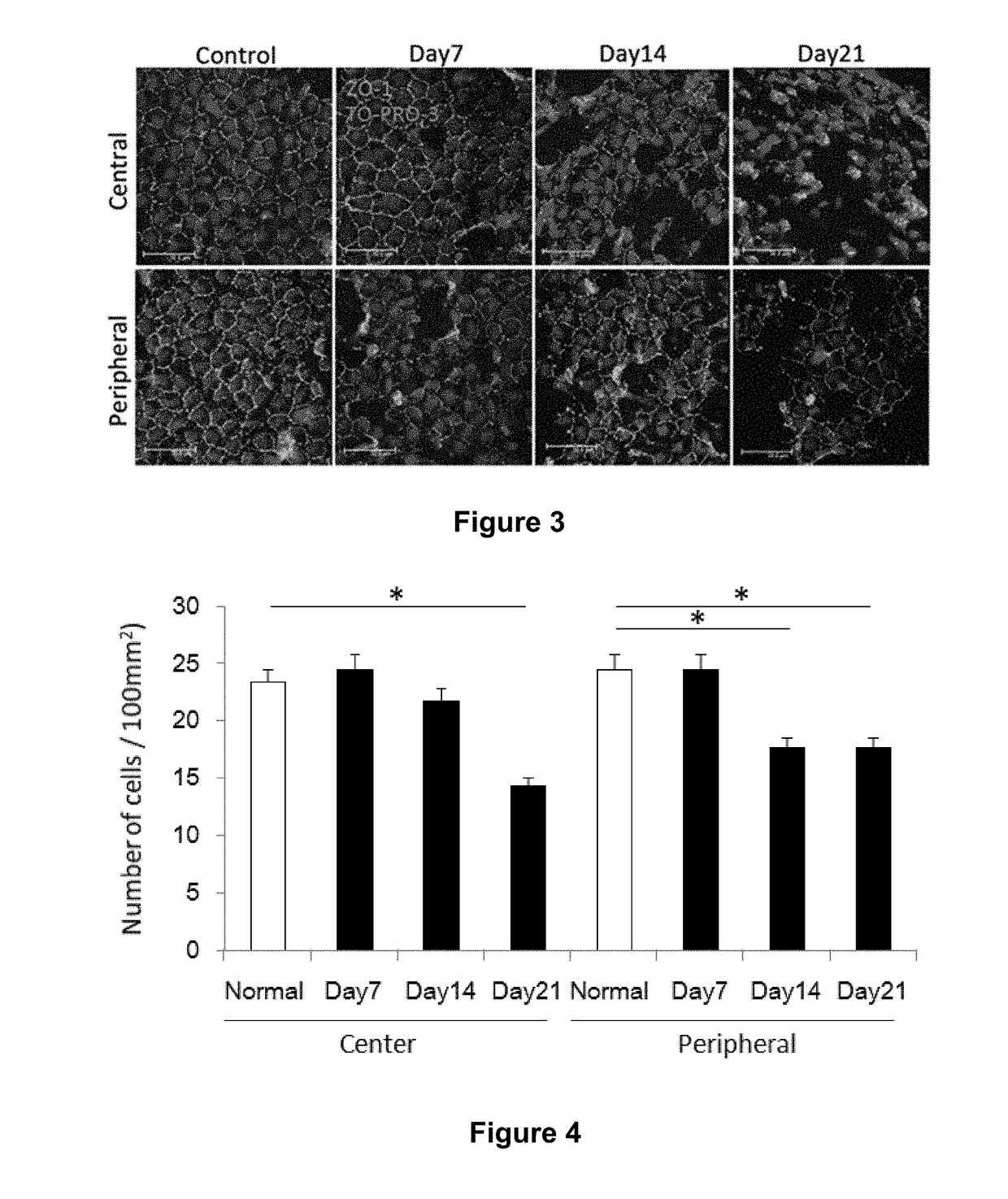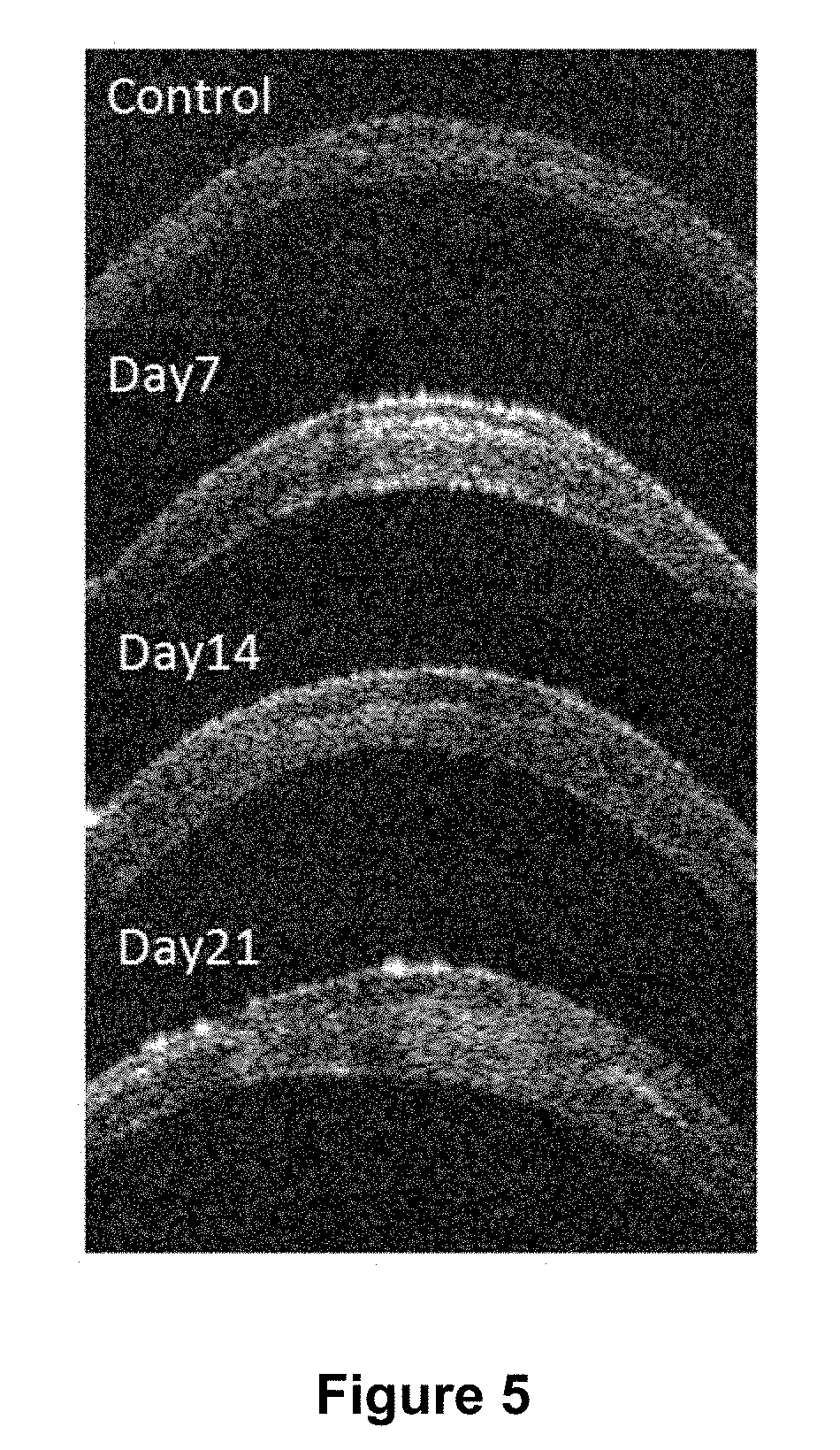Methods of reducing corneal endothelial cell loss
a corneal endothelial cell and cell technology, applied in the field of reducing can solve the problems of partial neurotrophic keratopathy, damage to corneal nerves, etc., and achieve the effects of reducing nerve loss-related corneal endothelial cell loss, and reducing the number of corneal nerves
- Summary
- Abstract
- Description
- Claims
- Application Information
AI Technical Summary
Benefits of technology
Problems solved by technology
Method used
Image
Examples
example
Example 1
Nerve Loss-Related Corneal Endothelial Cell Loss and Ability of VIP to Reduce Nerve Loss-Related Corneal Endothelial Cell Loss
[0101]A set of experiments was performed to evaluate corneal endothelial cell alterations after trigeminal axotomy and the effect of VIP on corneal endothelial cells after trigeminal axotomy.
Materials and Methods
Animals and Surgical Procedure
[0102]Six- to eight-week old male BALB / c mice (Charles River, Wilmington, Mass.) were used in these experiments. Trigeminal axotomy was performed by first anesthetizing the animals with a ketamine (100 mg / mL) / xylazine (20 mg / mL) / acepromazine (15 mg / mL) mixture. After anesthetization, small incision lateral canthotomy was performed, two tractional sutures were placed on the lid skin, and the conjunctival fornix were incised circumferentially around 90 degrees. The eye globe was rotated nasally by gently pushing the nasal fornix with blunt forceps, exposing the trigeminal nerve and minimizing intraoperative bleedin...
PUM
| Property | Measurement | Unit |
|---|---|---|
| diameter | aaaaa | aaaaa |
| diameter | aaaaa | aaaaa |
| diameter | aaaaa | aaaaa |
Abstract
Description
Claims
Application Information
 Login to View More
Login to View More - R&D
- Intellectual Property
- Life Sciences
- Materials
- Tech Scout
- Unparalleled Data Quality
- Higher Quality Content
- 60% Fewer Hallucinations
Browse by: Latest US Patents, China's latest patents, Technical Efficacy Thesaurus, Application Domain, Technology Topic, Popular Technical Reports.
© 2025 PatSnap. All rights reserved.Legal|Privacy policy|Modern Slavery Act Transparency Statement|Sitemap|About US| Contact US: help@patsnap.com



